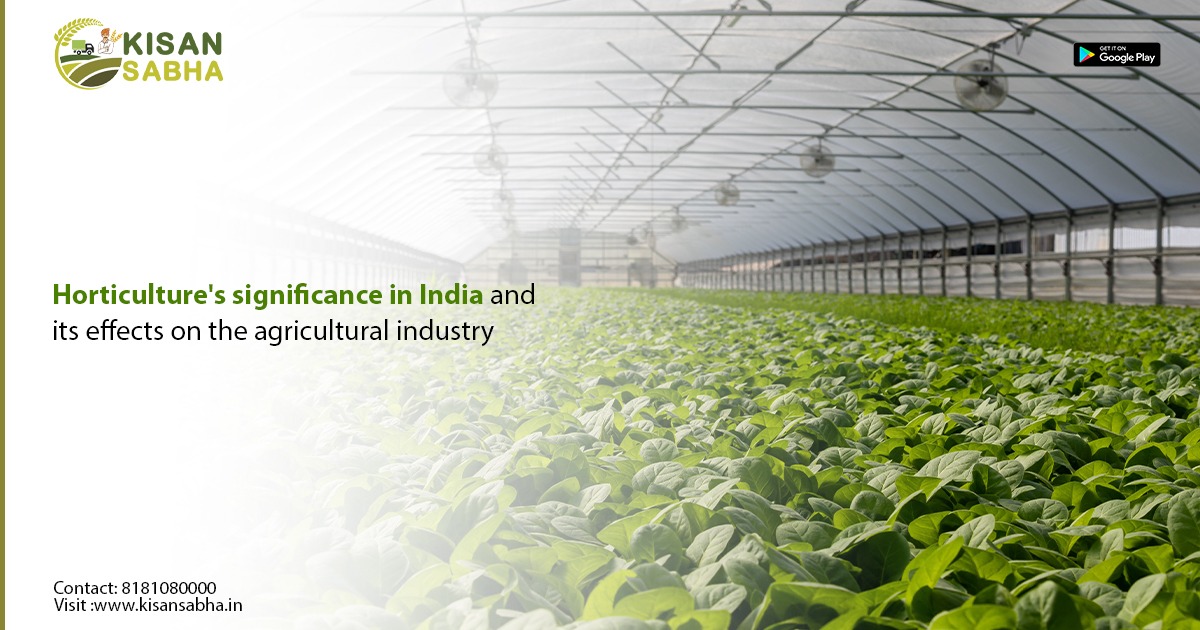The importance of horticulture in India cannot get overstated.. Since 2012–2013, the output of horticulture has surpassed that of food grains, and it currently accounts for almost 35% of the total value of crops produced in the agriculture sector.
Fruit, vegetable, floral, medicinal, and aromatic plant, mushroom, plantation, and forestry cultivation are just a few of the many activities that go under the umbrella term “horticulture.” Animal raising is not a focus of horticulture, in contrast to agriculture. Agriculture’s subdivision is mainly known as horticulture. Millions of people in India depend on horticulture for their nourishment and financial stability.
Horticulture: What is it?
Growing plants and vegetables for food, medicine, and other purposes is the focus of horticulture, a significant subfield of agriculture. It encompasses all aspects of agricultural production, from cultivating crops in massive enterprises to growing flowers and vegetables in a family garden. In horticulture, plants, their growth and development, and their interactions with the environment are all studied.
Horticulture is a unique area of study since it mixes concepts from plant biology, agronomy, soil science, and other fields. Horticulture’s primary objective is to ensure the development of beautiful, healthy, and aesthetically attractive plants, fruits, and vegetables.

Horticulture’s significance in India
Horticultural crops are essential for the Indian population’s food security and nutrition. Particularly for the residents of rural and tribal areas, they provide as a significant source of nourishment. The main sources of vitamins and minerals in the diet of the Indian population are fruits and vegetables.
Another significant source of revenue for farmers in horticulture. It gives them the chance to diversify their sources of income. Another significant source of raw materials for the food processing sector is horticulture. Horticulture accounts for a significant portion of the raw materials used in the manufacture of food items in India.
Horticulture’s significance may also get observed in the way it contributes to environmental preservation. Planting trees and other vegetation helps to preserve soil fertility, minimize air pollution, and absorb carbon dioxide. Additionally, it aids with energy and water conservation.
Horticulture plays a significant role in the growth of the rural economy. It offers a means of creating money and jobs in rural communities. As a result, it raises rural residents’ standards of living and contributes to the reduction of poverty.
In India, horticulture is a significant source of employment, especially for women and members of underrepresented social groups.
As India’s horticulture industry has grown, it has produced a number of value-added goods and services, including processing and packaging facilities, which have boosted the sector’s competitiveness.
Given that a sizable amount of India’s horticultural product gets exported to other nations, horticulture is also a key source of foreign cash for the nation.
The National Horticulture Mission and the Horticulture Development Programs are two of the policies and initiatives the Indian government has put in place to encourage the expansion and development of the horticulture industry.
Wrapping it up
Due to the diversification aspect and the fact that it is far more lucrative than the agriculture sector, India’s horticulture industry has enormous potential. The Indian government has recently developed many programmes and made plans to improve the industry.
Visit www.kisansabha.in now!!





